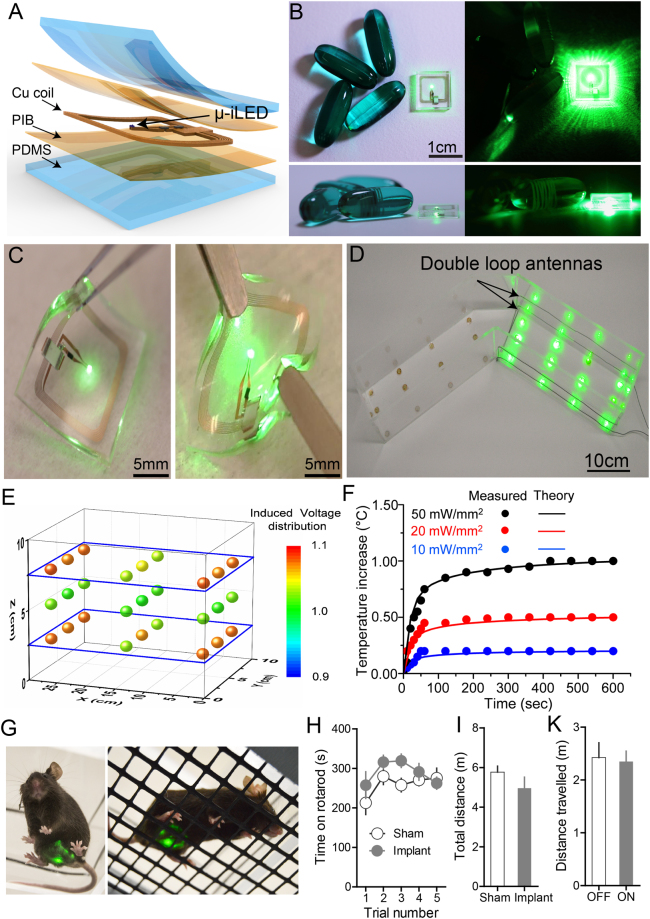Figure 5.
Flexible wireless optoelectronic device designed for optogenetic modulation of bladder afferent neurons. (A) Schematic illustration of the layered conformation of optoelectronic device. (B) Image of a micro-fabricated device adjacent to a 200 g capsules for the size comparison. (C) Demonstration of the flexibility of a functioning device with a forceps. (D) Image of wireless operation of optoelectronic devices in the V-maze with the double loop antennas. (E) Measurement of the normalized output power distribution of nine devices at heights of 2.5, 5, and 7.5 cm from the bottom of the cage demonstrating uniform power distribution of across the cage. (F) Thermal modeling and management of a μ-ILED device versus time at different peak output powers (20, 50, and 100 mW/mm2) demonstrating a maximum of 1 degree change at maximum light output of 100 mw/mm2. (G) Mice with wireless optoelectronic devices implanted over the bladder. (H) Implantation of the bladder optoelectronic device did not effect on motor behavior vs. sham animals in the rotarod test (P = 0.12, F4,4 = 1.118, t1,8 = 1.407 n = 8 sham, n = 8 device). (I) Mice with bladder implants did not exhibit significant difference in total distance travelled in open field test compared to sham mice (P = 0.16, two-tailed, n = 8 sham, n = 8 device). (K) There is no difference in distance traveled between an NFC-On and NFC-Off chamber in wild type mice. (P = 0.8556, two-tailed, n = 12 wild type,).

